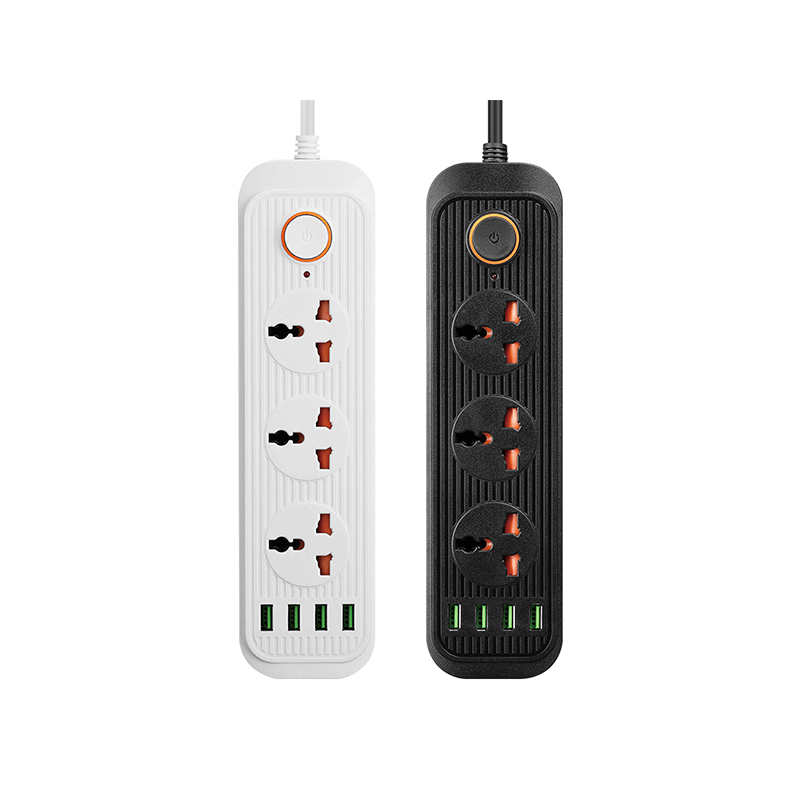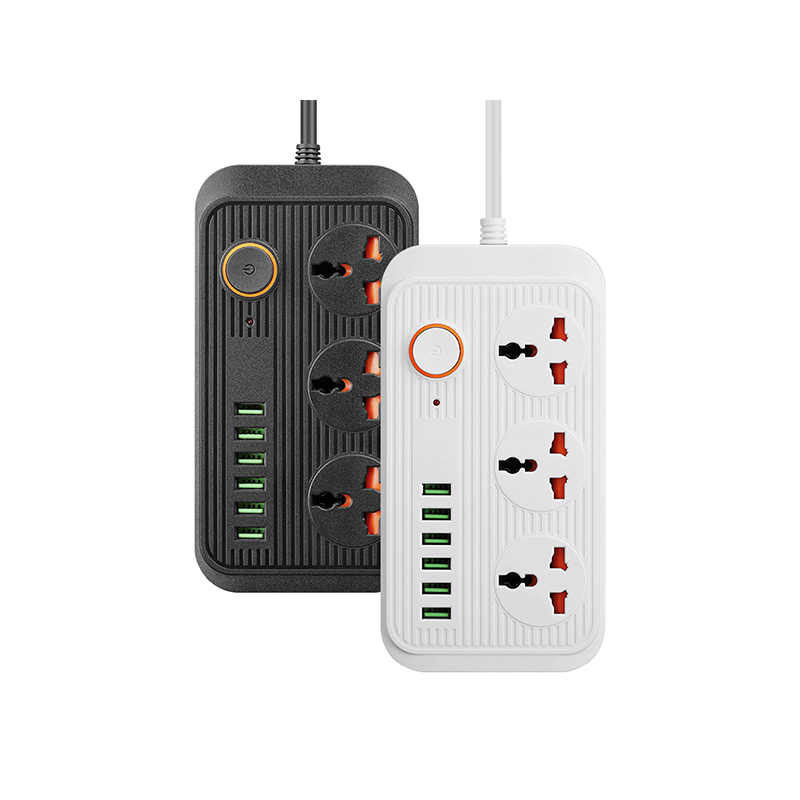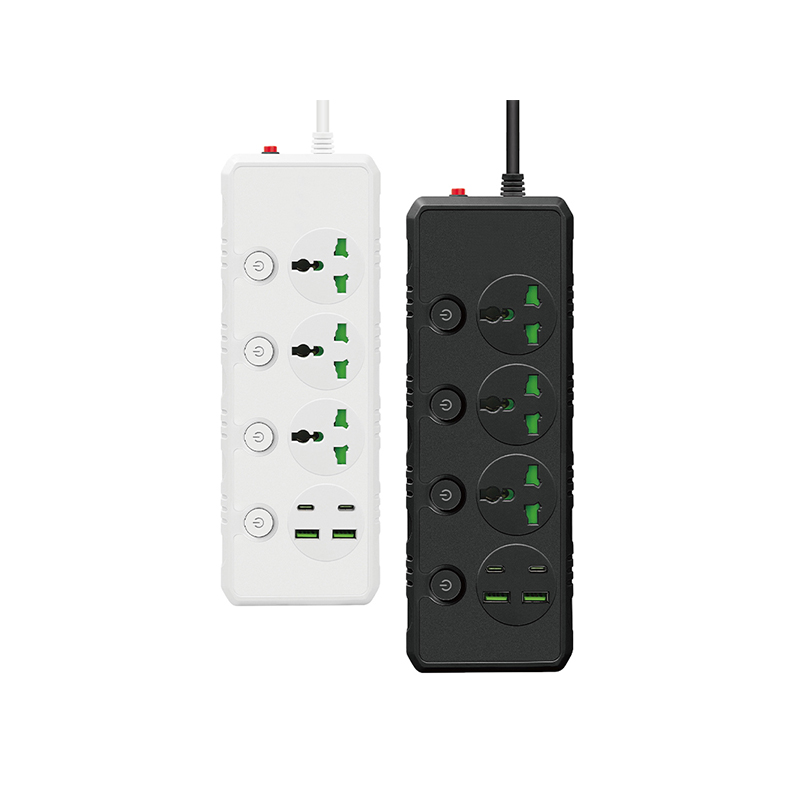How to ensure the carrying capacity of the internal wires of universal socket when using high-power electrical appliances?
Release Time : 2025-05-28
When high-power electrical appliances are running, the current load far exceeds that of ordinary electrical equipment, which places extremely high demands on the carrying capacity of the wire inside the universal socket. To ensure the carrying capacity of the wire, solutions must be built from multiple dimensions such as material nature, structural design, and safety protection to avoid safety accidents such as fires caused by wire overload and ensure electricity safety.
Material performance is the foundation for ensuring the carrying capacity of wires. The internal wires of high-power universal sockets must be selected from high-purity, low-resistance conductor materials. Oxygen-free copper is the first choice due to its high purity and low impurities. Its good conductivity can significantly reduce the resistance during current transmission and reduce heat generation. At the same time, the cross-sectional area of the wire will be scientifically selected according to the current requirements of high-power electrical appliances. A larger cross-sectional area means a stronger current carrying capacity, which allows the current to pass smoothly during the startup and operation of high-power electrical appliances, avoiding severe heating due to excessively thin wires, which in turn causes dangerous situations such as aging of the insulation layer or even fire.
The quality of insulating materials is directly related to electricity safety. When high-power electrical appliances are running, the wires will generate heat. If the insulation material has poor heat resistance, it is easy to soften, deform or even break, leading to hidden dangers such as leakage and short circuit. Therefore, the insulation layer of the universal socket wire will use special materials that are resistant to high temperature and aging, such as polyvinyl chloride (PVC) modified materials or cross-linked polyethylene (XLPE). These materials not only have good insulation properties, but also maintain stable physical and chemical properties at high temperatures. They are not easy to crack or fall off after long-term use, providing a reliable insulation protection barrier for the wires.
The internal structure design of the socket plays a key role in the performance of the wire's carrying capacity. Reasonable wiring layout can reduce interference between wires and reduce resistance. The internal wires of the universal socket will be scientifically arranged and fixed to avoid entanglement and extrusion, ensuring a smooth current transmission path. The wires and socket connection terminals are equally important. High-quality terminals are made of high-quality metal materials and are treated with tinning, gold plating and other processes to enhance conductivity and oxidation resistance. Reliable crimping or welding processes are used during connection to tightly combine the wires and terminals, reduce contact resistance, and prevent local heating due to poor contact, which affects the wire's carrying capacity.
Overload protection devices are an important line of defense for protecting wire safety. Common overload protection components include fuses and overload protectors. When the current exceeds the rated value, the fuse will melt due to its own heat, cut off the circuit in time, and protect the wire and electrical equipment. The overload protector is more intelligent and can monitor the current in real time. When an overload is detected, the power supply is automatically cut off. After the fault is eliminated, the power supply can be restored manually or automatically. These protection devices are like loyal "safety guards". Once the current is abnormal, they will act quickly to prevent the wire from being damaged by long-term overload.
Heat dissipation design is a necessary condition for maintaining the normal working state of the wire. The operation of high-power electrical appliances will generate a lot of heat inside the socket. If it is not dissipated in time, the wire and components will be in a high temperature environment for a long time, accelerating aging and reducing the carrying capacity. Therefore, the universal socket shell adopts flame-retardant engineering plastics with good heat dissipation performance, and is designed with reasonable heat dissipation holes or heat dissipation slots. These heat dissipation structures promote air circulation, dissipate the internal heat to the outside in time, maintain the internal temperature of the socket within a reasonable range, ensure that the wire works under suitable conditions, and extend the service life.
Strict quality inspection and certification processes are the last checkpoint to ensure the carrying capacity of the wire. The manufacturer will conduct multiple strict tests on each batch of universal sockets, including wire resistance test, insulation performance test, overload capacity test, etc. Only products that pass all tests and meet national standards and safety certification can enter the market. Regulatory authorities will also conduct regular spot checks and severely punish unqualified products to ensure consumer electricity safety from the source and ensure the reliability of universal sockets in high-power usage scenarios.







